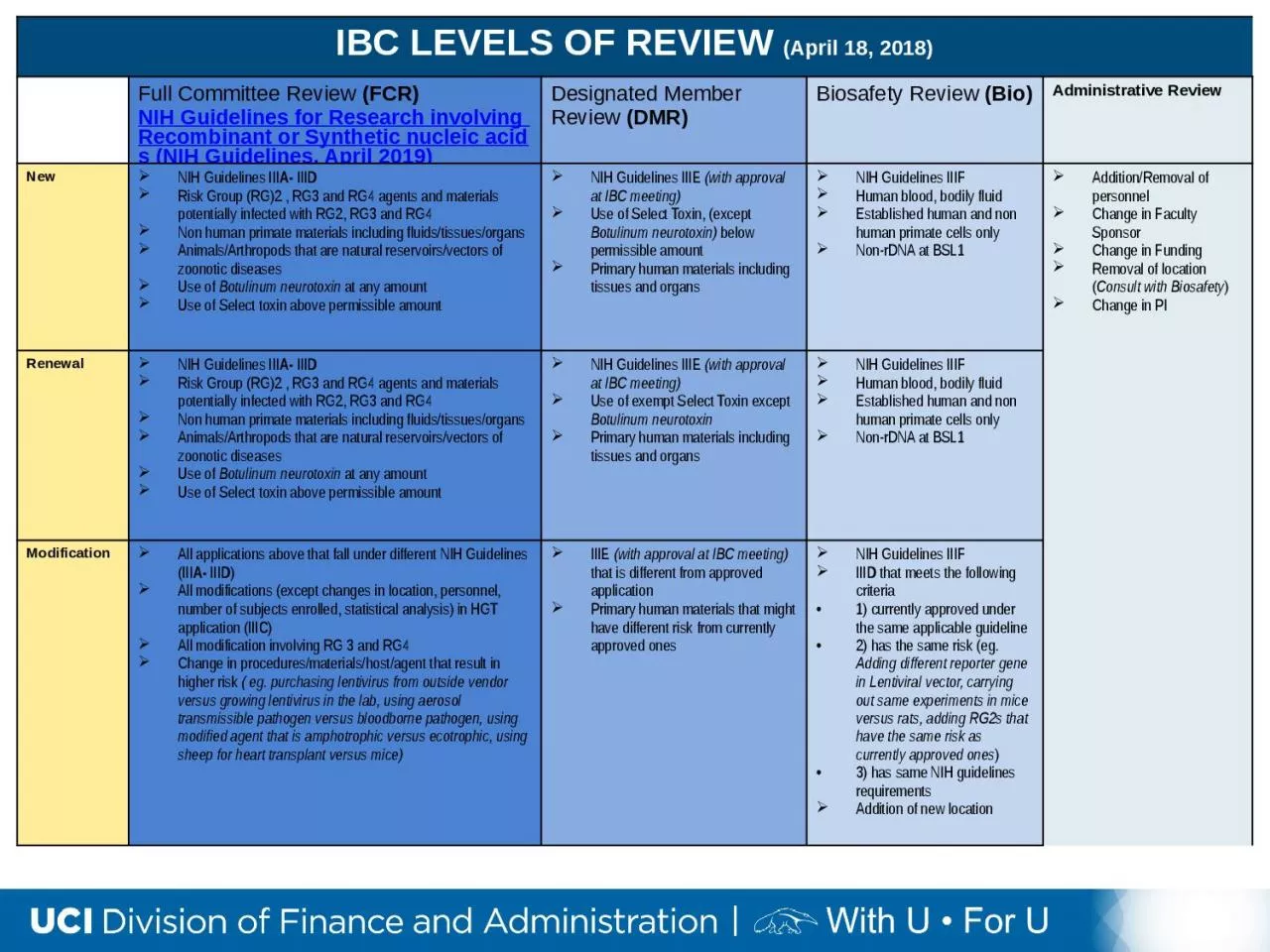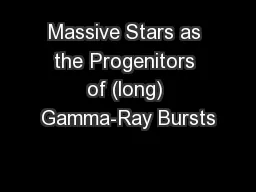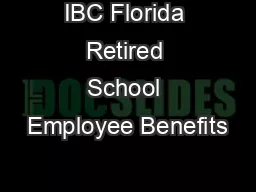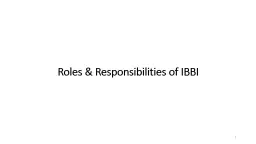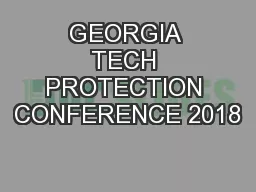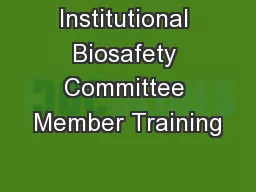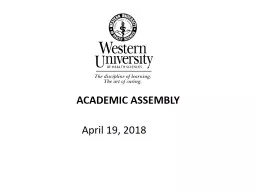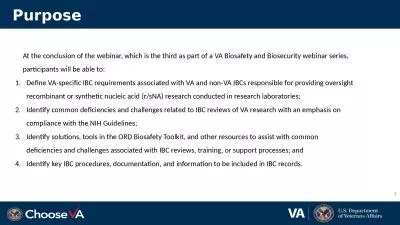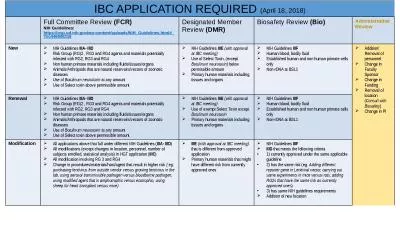PPT-IBC LEVELS OF REVIEW (April 18, 2018)
Author : jocelyn | Published Date : 2023-07-21
Full Committee Review FCR NIH Guidelines for Research involving Recombinant or Synthetic nucleic acids NIH Guidelines April 2019 Designated Member Review DMR Biosafety
Presentation Embed Code
Download Presentation
Download Presentation The PPT/PDF document "IBC LEVELS OF REVIEW (April 18, 2018)" is the property of its rightful owner. Permission is granted to download and print the materials on this website for personal, non-commercial use only, and to display it on your personal computer provided you do not modify the materials and that you retain all copyright notices contained in the materials. By downloading content from our website, you accept the terms of this agreement.
IBC LEVELS OF REVIEW (April 18, 2018): Transcript
Download Rules Of Document
"IBC LEVELS OF REVIEW (April 18, 2018)"The content belongs to its owner. You may download and print it for personal use, without modification, and keep all copyright notices. By downloading, you agree to these terms.
Related Documents

